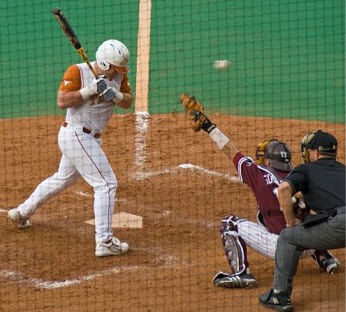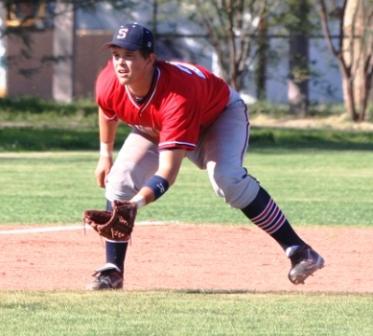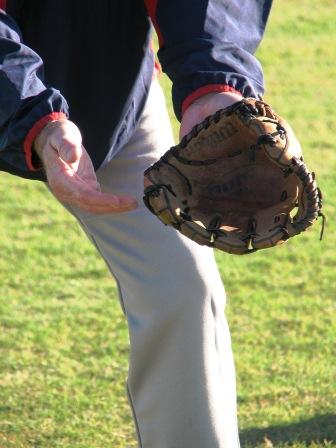Whether it is batting or fielding, this concern has certainly been a part of baseball since its' inception, over 170 years ago.
Without a doubt, if you have played baseball at any level, to include your neighborhood park, you have experienced being hit.
The most common fear is with a pitched ball; but there is also a bad hop ground ball, as well as a thrown or batted ball.
All are real and legitimate.
So how do we help players move beyond the paralysis level, to the aggressive take charge level, in their baseball life? Providing them with the skills to manage the fear and decrease their vulnerability for getting hit, is a big step towards that goal.
An experience easy to forget? Not hardly!
Some, Or All Of The Following May Sound Familiar:
Put it out of your mind.
Don't think about it.
Jump back in there.
Don't rub it.
Take one for the team.
Wear it.
The list goes on; Unfortunately, none of those suggestions will do anything to help the situation.
The phrase,"don't think about getting hit," becomes think about getting hit. The image implant is "getting hit", and the words "don't think" cannot block out the getting hit image.
Fears come from uncertainty, and the uncertainty indicates a lack of confidence. That lack of confidence comes from not having a plan to deal with the situation.
Providing them with a plan to minimize the perceived danger of getting hit, the steps to concentrate and hit the ball hard, creating good hop ground balls for themselves, and the rules of thumb for catching a baseball safely, all increase confidence and cause success levels to rise.
A Plan For The Batters' Box. Turning Their Front Shoulder Back Towards The Catcher Will Turn Their Head And Protect Their Face.
As you look at the image below, there are things you can point out to the players as to how much safer this method is:
Their head is turned away from the baseball, protecting their face.
Elbows, hands are also out of harms way, as well as their ribs and chest.
While nothing short of the ball missing them will eliminate the pain, they will have done everything in their power to minimize the impact.

Controlling The Concern ~ Tips From the Dugout
You can practice it with no ball, then with a rolled up sock. Throw them good pitches, where they simply load/stride and track the ball past them.
Start mixing in pitches they need to protect themselves from. All this can be done with the rolled up sock, or at most a tennis ball.
Getting hit is not what they need to get used to, it is the movement to minimize the hit, or get out of the way.
Once they develop a good reaction to the pitch, no longer freezing or turning into the ball, they will have more confidence, as there is a definite plan for dealing with the situation.
Getting them to focus on the pitcher's release point, then load/stride on line(straight back at the pitcher), getting their front foot down early, will help them focus on the at bat, rather than the possibility of getting hit.
Bailing out, or stepping in the bucket is generally caused by stepping to hit, rather than step, then hit, as well as fear of getting hit.
When the pitcher is in his power position, with the ball loaded back, the hitter should be in his load/stride, or power position, the position he will hit from. That is accomplished before the pitch is released, so it should be on line, straight back at the pitcher.
The fear of being hit with a baseball is universal for sure. No one is immune to it; but millions of players have learned to control it over the years. Some of the fear disappears with experience, the rest controlled within a framework of skills that allow the player to concentrate on the skill at hand.
A Plan For Ground Balls
Play the ball, don't let the ball play you. A standard rule for all ground balls, but how do I accomplish that?
I was always taught that if you didn't need to come and get a ground ball, you wouldn't have time to think about it anyway.
Providing young players with a goal, or objective for each ground ball provides them with something to focus on, rather than the possibility of a bad hop.
Try setting a goal for them to limit all ground balls to no more than 3 hops for younger players, 2 hops for those more advanced:
Have them start by counting the hops as they move forward to catch the ball.
Attempt to catch the ball on the fewest hops possible. Simplify it to two hops, high hop and shorthop. It is most always the inbetween hop that will get them hit.
As they come to the ball, have them line the ball up on their left eye, so they will be fielding the ball left of the body midline.
If you can get them thinking that the shorthop before the next long hop is the best one to get, they are well on their way to creating better hops for themselves, and the confidence level goes up another notch.
Get them started towards the hitter with the pitch, using a short right, left step, as the pitch is being delivered, or as someone is hitting or throwing a ground ball to them.
It isn't an immediate process. With time they will see that the hops they are creating for themselves make everything easier and safer, to include the subsequent throw.

How About Those Line Drives, Or Balls That Are Thrown?
So much of the receiving process is an understanding of the rules of thumb. These rules allow the player to get their glove in the best possible position to catch the ball, as well as the safest.
The Rules Of Thumb
Eliminate Fear.
It is absolutely essential to keep fear from being a part of their experience. If they have already had that bad experience, start back at the beginning creating successful and painless experiences that you can build upon.
Demonstrate Rules Of Thumb.
If the ball is above waist, have your thumbs together.
Below the waist, pinkies together.


Use Two Hands.
A good analogy for using two hands is to have players think of a short cord, 7-8 inches long, attached to both of their wrists. When their glove goes, their throwing hand goes also. Not because they are beginners; but because it will make them quicker when they go to throw.
Catch In Center Of Body.
To accomplish this, players must learn to move their feet, to get around the baseball, catching it in the center of their body.
The Payoff
It's the purest reward for a baseball coach when you see the smile emerge and the eyes light up, as all the effort comes to fruition. A 6 year old catches a ball above his waist with his thumbs together, keeping the ball from rolling up his glove, straight at his face.
He is on his way to a skill which helps eliminate the fear of being hit with a thrown or batted ball, dramatically increasing his safety, self confidence and level of fun!
They are special moments indeed, and some of life's greatest pleasures, no matter what level you coach!
Source: http://www.theoleballgame.com/fear-of-being-hit.html



No comments:
Post a Comment